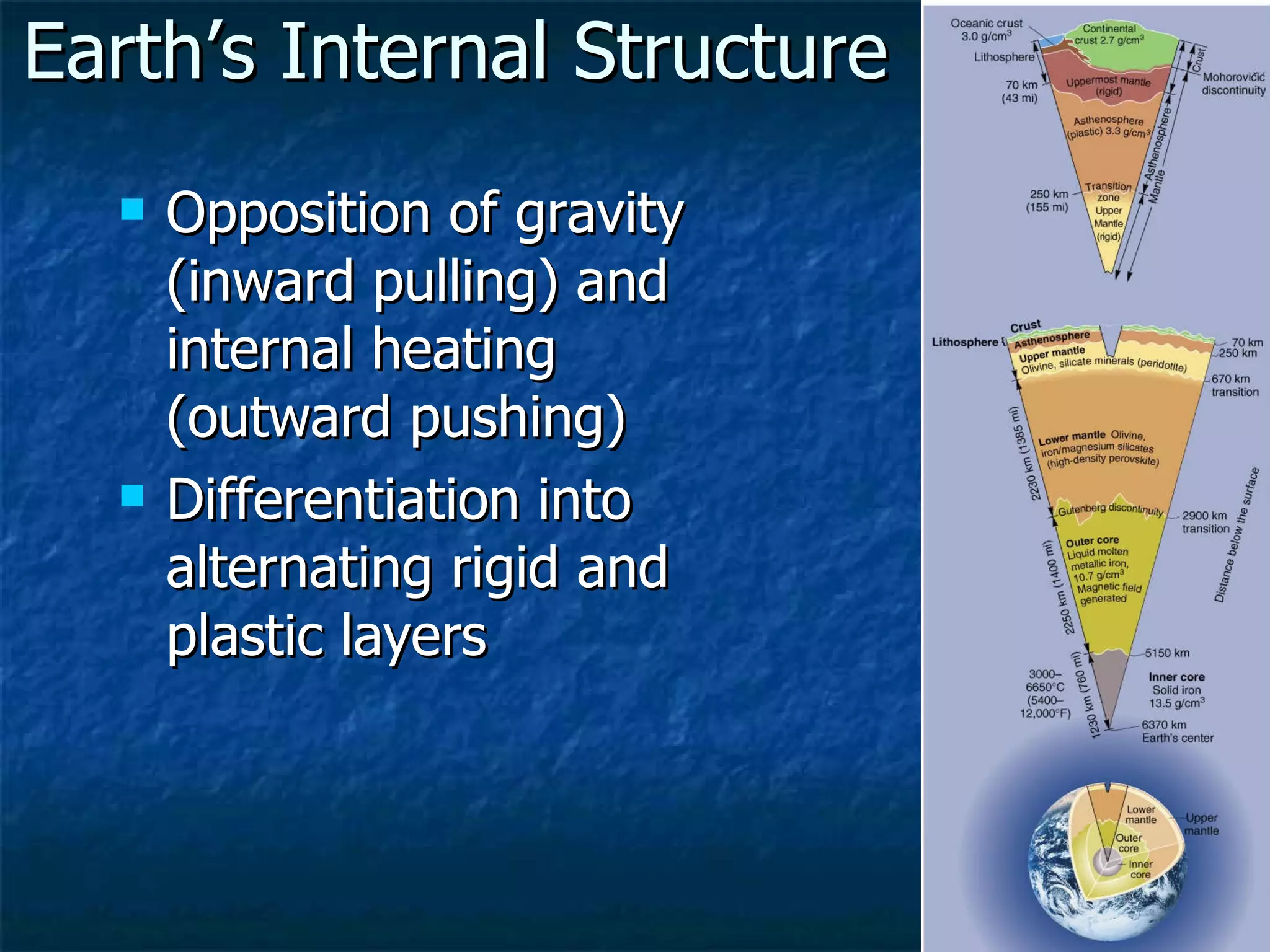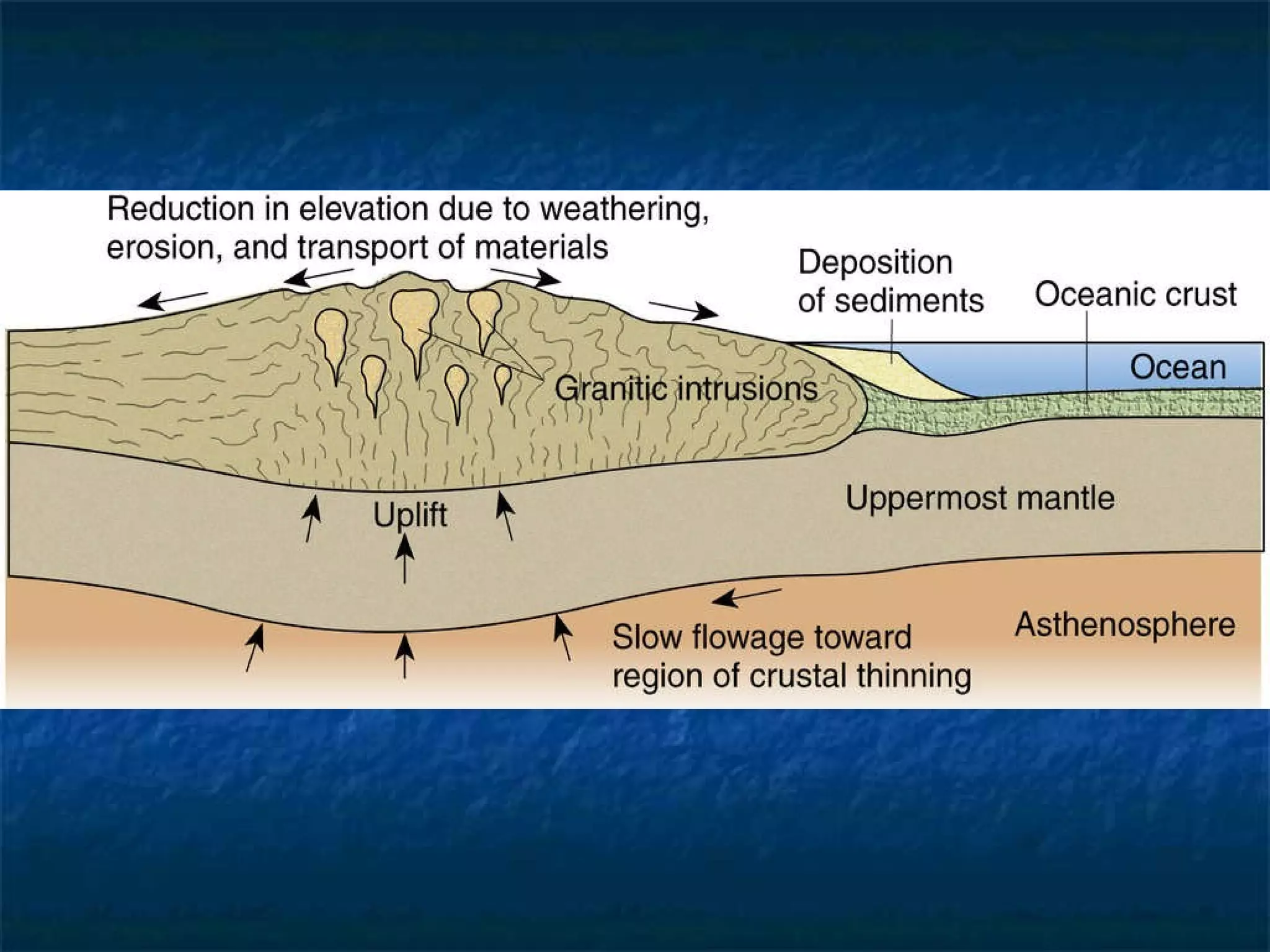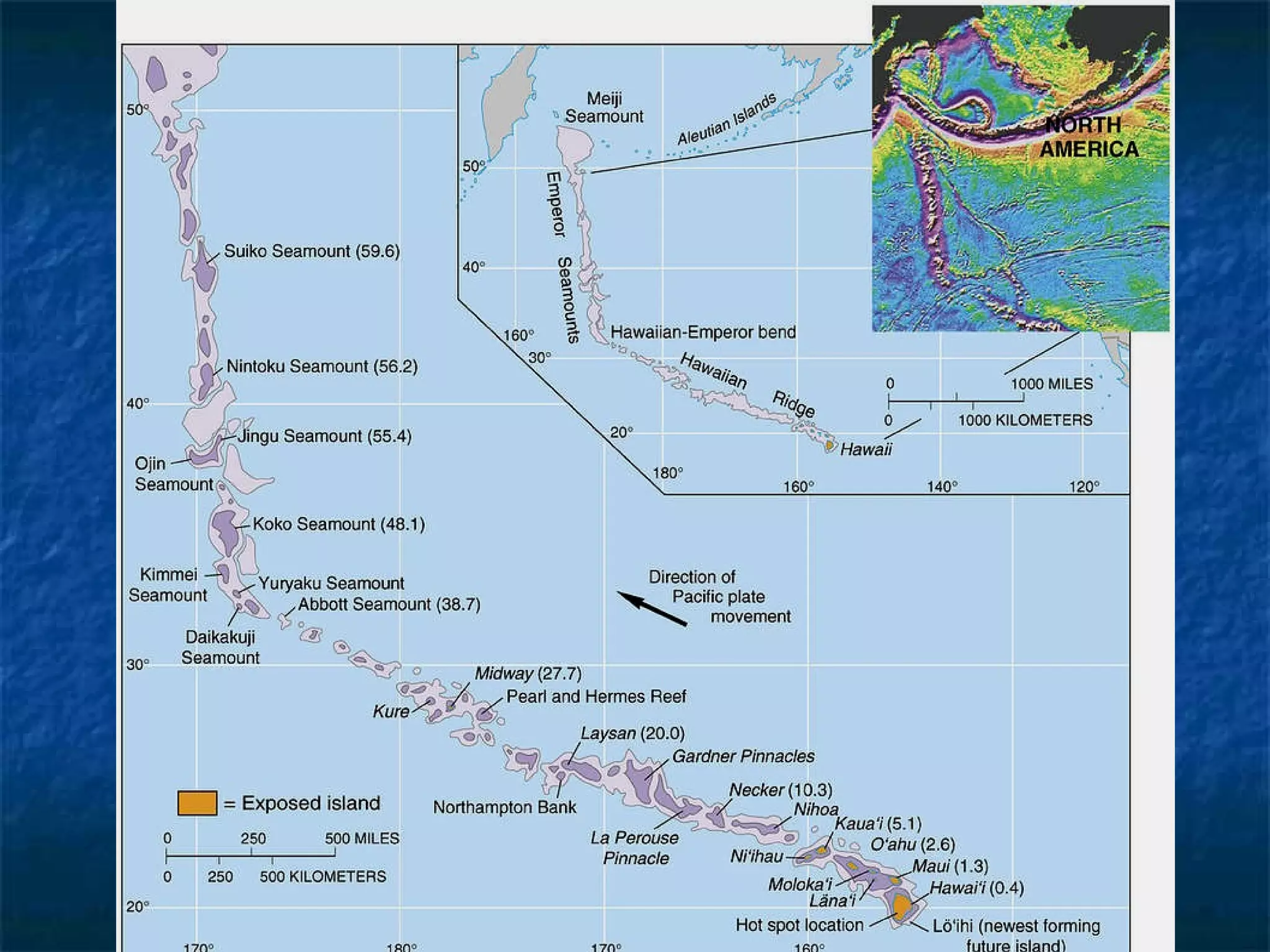The document discusses several key geologic cycles and processes:
1) There are endogenic systems within the Earth driven by heat and radioactive decay, and exogenic systems external to the Earth driven by solar energy and gravity. These systems interact in geologic cycles that shape the Earth's surface over millions of years.
2) The rock cycle occurs at plate boundaries where igneous rocks are transformed into sedimentary and metamorphic rocks via weathering, erosion, deposition, and subduction.
3) Plate tectonics involves the fragmentation of crust into plates that move at boundaries, creating volcanism from magma at divergent boundaries and subduction at convergent boundaries, building mountains over millions of years















































